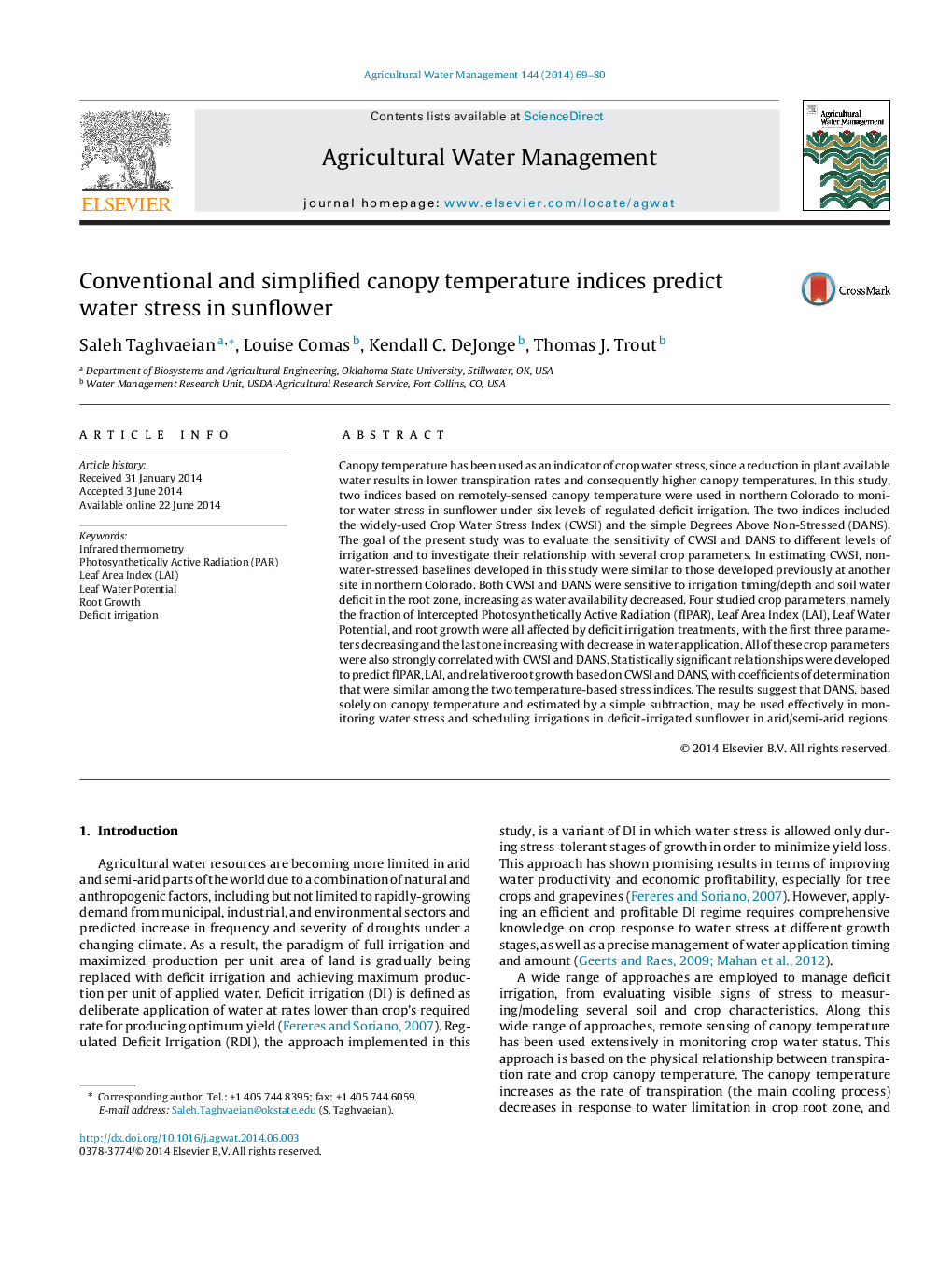| Article ID | Journal | Published Year | Pages | File Type |
|---|---|---|---|---|
| 4478615 | Agricultural Water Management | 2014 | 12 Pages |
•Two water stress indices were estimated based on sunflower canopy temperature.•Both indices responded to the timing and amount of deficit irrigation treatments.•Both indices were negatively correlated to fIPAR, LAI, and Leaf Water Potential.•A positive correlation was observed between indices and root growth.
Canopy temperature has been used as an indicator of crop water stress, since a reduction in plant available water results in lower transpiration rates and consequently higher canopy temperatures. In this study, two indices based on remotely-sensed canopy temperature were used in northern Colorado to monitor water stress in sunflower under six levels of regulated deficit irrigation. The two indices included the widely-used Crop Water Stress Index (CWSI) and the simple Degrees Above Non-Stressed (DANS). The goal of the present study was to evaluate the sensitivity of CWSI and DANS to different levels of irrigation and to investigate their relationship with several crop parameters. In estimating CWSI, non-water-stressed baselines developed in this study were similar to those developed previously at another site in northern Colorado. Both CWSI and DANS were sensitive to irrigation timing/depth and soil water deficit in the root zone, increasing as water availability decreased. Four studied crop parameters, namely the fraction of Intercepted Photosynthetically Active Radiation (fIPAR), Leaf Area Index (LAI), Leaf Water Potential, and root growth were all affected by deficit irrigation treatments, with the first three parameters decreasing and the last one increasing with decrease in water application. All of these crop parameters were also strongly correlated with CWSI and DANS. Statistically significant relationships were developed to predict fIPAR, LAI, and relative root growth based on CWSI and DANS, with coefficients of determination that were similar among the two temperature-based stress indices. The results suggest that DANS, based solely on canopy temperature and estimated by a simple subtraction, may be used effectively in monitoring water stress and scheduling irrigations in deficit-irrigated sunflower in arid/semi-arid regions.
